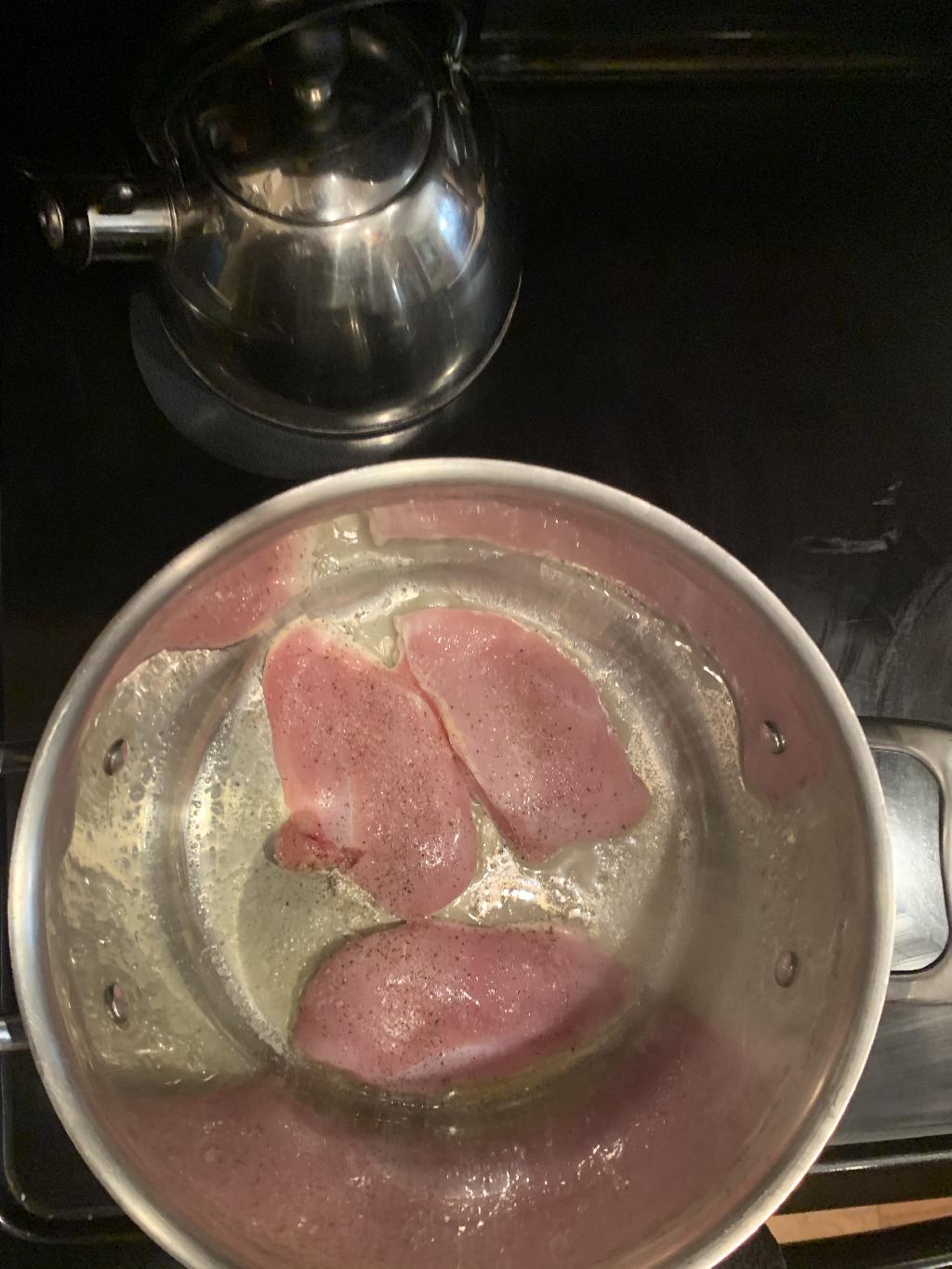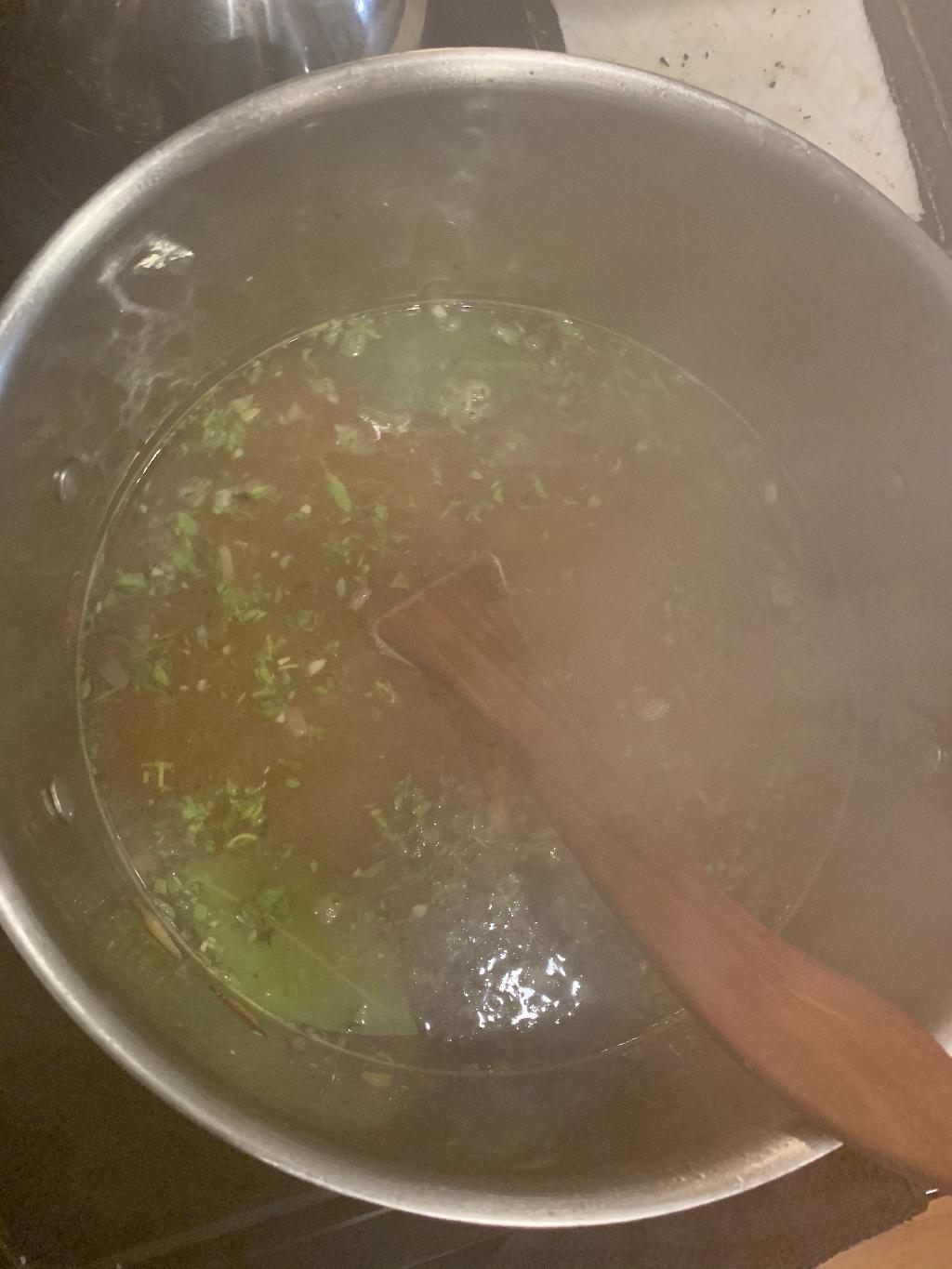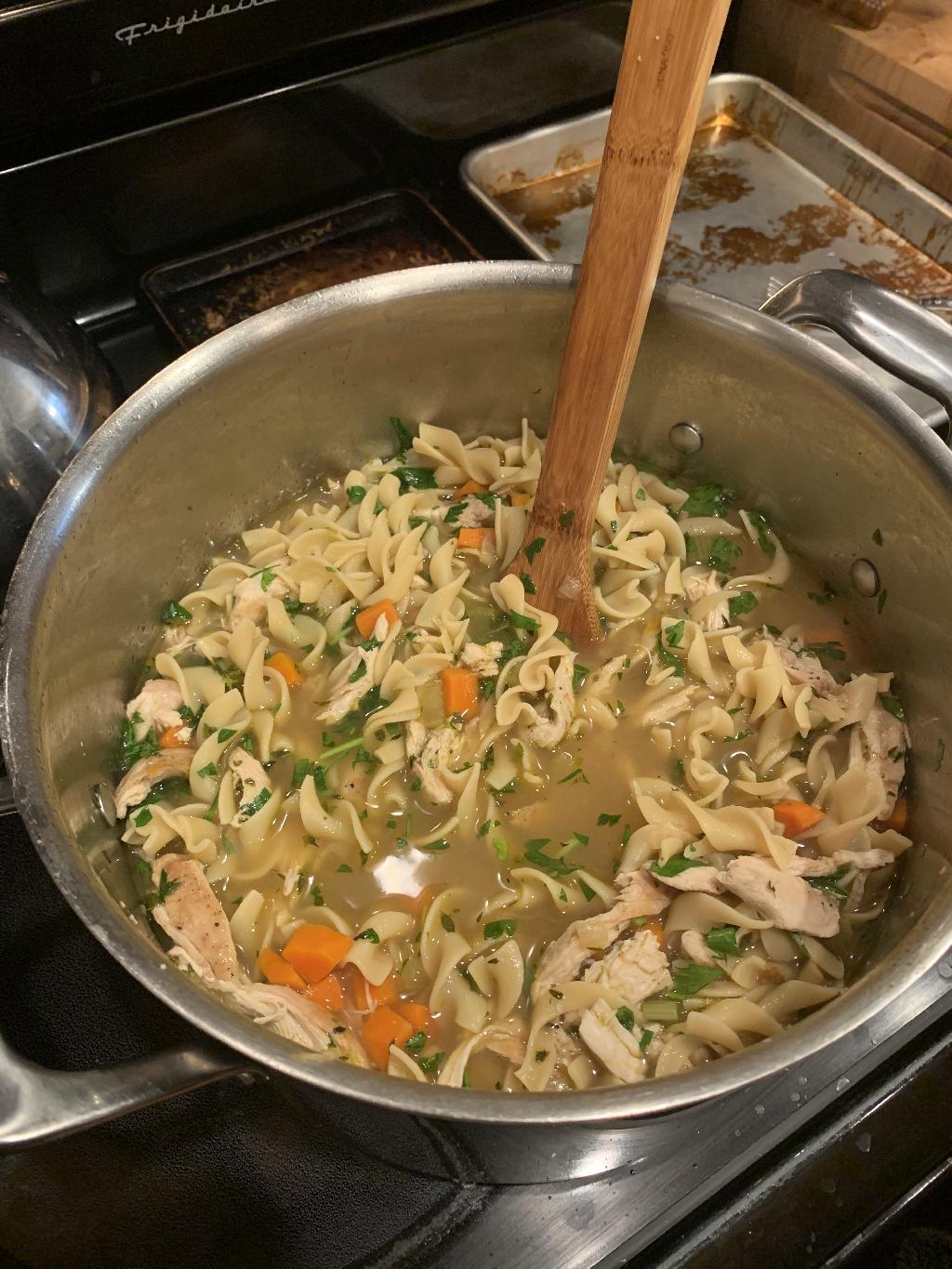Pheasant Noodle Soup
Go back to all recipesWith the Coronavirus pandemic ongoing and the flu season fast approaching in the United States, I thought I'd try to post a recipe that's a classic folk remedy all around the world. When I was dating my wife, Tami, who just so happens to be a nurse ... she would brag about how she never got sick. Wouldn't you know it ... A few weeks later, she was sporting a temperature and couldn't get out of bed. One night, on the way to her house, I stopped at the local Walmart and purchased everything I needed to make some good old fashion homemade Chicken Noodle Soup. I made a huge batch that she'd be able to eat on for days, hoping that it'd help her feel a little better. To this day, she still talks about that soup! I don't know if it was that good or if the virus she had just made her that delirious. Anyway, this is my attempt to recreate that recipe with Pheasant and some homemade vegetable broth.
The great thing about a vegetable broth is it's super easy to make and there isn't a lot of rules. Generally, when we make it here, we just take all the vegetables and herbs that are about to go bad, throw them into a pot of water and let it simmer for a few hours. For an added flavor boost, you can also roast those vegetables before hand. Sometimes my wife will save ends from vegetable we used in other recipes in a zip lock bag, just the scrap pieces you'd normally throw away and we'll add those to a batch as well. Root vegetables like Carrots and Parsnips, along with Onions, Leeks, Celery, Mushrooms all make for a great broth. It's a great way to get some use from them before they spoil.
We have a small raised bed garden we started in the back yard. We had a trove of Zucchini this year, a lot more then we could ever eat and a bunch of stunted carrots that didn't look good, but the dogs loved ... so I added some of them to my broth as well. I generally don't add salt or a lot of seasoning to my broth, because I never know what I'm going to use it for. Not adding the salt and seasoning will give you more control over how your final dish taste. You'll need to use your broth within a few days or freeze to use another date. If you plan on freezing some of this soup, do not add the noodles, they'll get mushy in the freezer. You can cook everything else and freeze, then just cook the noodles when you're ready to eat.
I hope everyone has a healthily, virus free, safe hunting season. Wash your hands and don't touch your face!!
Ingredients
Vegetable Broth
Pheasant Noodle Soup
Instructions

Step #1 Fill a large kettle with 12-16 cups of water. Cut all the vegetables in halves or thirds and add to pot. Add bays leaves and thyme springs. Bring pot to boil, then reduce to a simmer. Cook for 4 hours at a simmer with the lid on. Allow to cool, then strain the broth into another large pot. Bottle in mason jars or use immediately.

Step #2 Chop the Carrots, Celery and Onion. Remember to cut into sizes you'd like to eat and that will fit on a spoon.

Step #3 In a large stock pot, melt 1 tablespoon of butter over medium heat. Remove any skin from the pheasant breast and season both sides generally with salt and pepper

Step #4 Brown each side of the pheasant for 3 to 4 minutes, then remove to plate.

Step #5 Add chopped up onions, carrots and celery. Sprinkle with salt and allow to cook for 5 to 7 minutes. Add garlic and cook for another minutes.

Step #6 Add Oregano and Thyme, then add 12-16 cups of Vegetable broth. Be sure to scrap up any brown bits on the bottom of the pan.

Step #7 Bring to a boil, the add bag of egg noodles and some more salt. Cook for 8 minutes. When noodles are done cooking, turn off heat.

Step #8 Shred the pheasant breast with a pair of forks and add to the stock pot.

Step #9 Chop some parsley and add to pot.

Step #10 Serve with some crackers or crusty white bread.
Recipe Card
Pheasant Noodle Soup
Ingredients
Vegetable Broth
Pheasant Noodle Soup
Instructions
About the Author

Jeff Davis
Visit authors websiteYou may think cooking and recipes don’t have much to do with a website dedicated to hunting dogs ... but really, why do we hunt? Sure, we enjoy watching our dogs work in the field and being outdoors, but ultimately, hunting is about survival and feeding our families. We might as well try to do it well. I'm not a chef and definitely no food authority ... but I do like to eat and enjoy cooking. After searching for people willing to share their recipes on Gundog Central, without much success, I decided to try to do a few on my own, with my wife Tami's help. The recipes I share here are things I like to eat and have made here at home. I've tried to include step-by-step instructions with each meal describing exactly how I did it, but my method may not be best, if you decide to try a recipe posted here, please use whatever technique you think works best, I'm simply sharing how I did it. You'll see a lot of recipes where I've tried to make things from starch, when I could have just used store bought ingredients, simply because I wanted to learn how something was done. My goal is to continually update these recipes as I learn new things and techniques. These are my attempts at creating good, home cooked food, that I would like to eat! If I'm sharing it here, my family and I enjoyed it and I believe you will too.


















